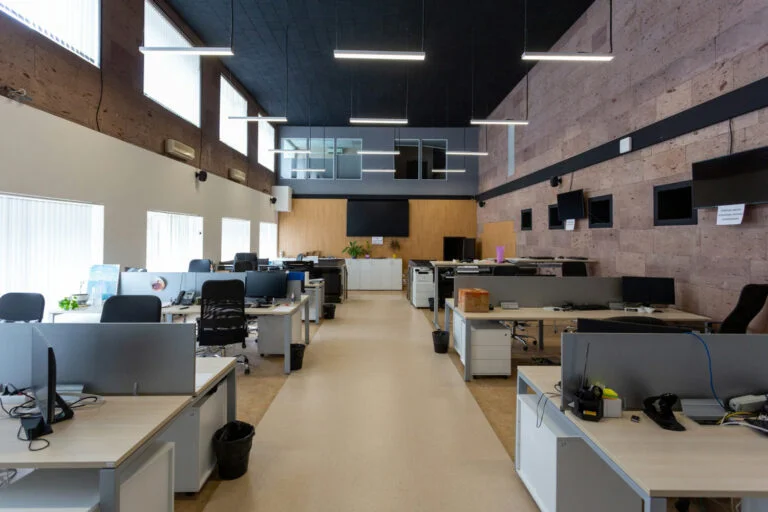Since the beginning of the pandemic, a lot has changed, and workplaces are no exception. Businesses adapt to the new operating reality, looking for the best practices streamlining existing places and transforming them into more efficient ones.
Space Management is one of those solutions. It's made for you to facilitate the office managing process. With the right tools at hand, it's easier than ever. But first, let's see what Space Management is all about.
What is Space Management?
Simply saying, space management was made to keep track of a physical place a company owns. It assumes analyzing the information about occupancy: identifying the size of the space, the number of premises, work desks, and how people are actually using this all.
Space Management is a powerful practice to help you determine bottlenecks in your workspace, lower real estate costs, and make a better forecast for the future.
Why is Space Management Important for a Business?
- Space overview and control
The popularity of the hybrid work format has made it harder to tell what hours employees visit the office. Space Management provides a full perspective picture of how many people utilize the place daily, weekly, and monthly. This helps to make sure every bit of the office is used correctly.
- Cost savings
Actual office utilization highlights areas for consolidation, enabling savings on utility bills (less heating, cooling, lighting).
Big cost savings might come when you decide to downsize the overall workspace if there is no need to keep so many unused areas.
- Better working conditions
By improving the management of the available workplace, your team gets an opportunity of having a more efficient office tailored to their working needs. For example, booking desks/meeting rooms software helps employees operate in comfort without wasting time searching for a place to work.
- Increased productivity
A convenient working environment positively reflects on productivity. Having different types of spaces for employees' purposes (booths for private work, creative rooms, break zones) encourages them to brainstorm, innovate, and collaborate with each other.
Try UnSpot for free
Get a smart solution to manage your hybrid workplace, create work schedules, book desks and meeting rooms, schedule meetings, and get office analytics.
What software can help to manage your space efficiently?
To build an effective workplace for your team, you need data. Using the right space management tools will ensure all areas are used rationally and meet employees' interests.
Real-time updates will let you control the space and make necessary improvements on time. Here are some tools to help you transform the place into a better one:
- Sign-in system
In order to measure space usage, you need a clear understanding of how many people visit the office daily and whether it's just your team or there are other visitors. Sign-in systems can help you get to know which employees are in the workplace most often and how many guests they invite. Based on collected data, it's easier to plan ahead to ensure the availability of space and resources for all team members.
2. Meeting room booking software
Employees often struggle with searching for suitable meeting rooms for their needs. Room booking solutions give your team a chance to reserve necessary space with a single click. And detailed reports will provide you an overview of every room usage to optimize the place if needed.
3. Hot desk booking software
With new ways of working, that might be hard to keep track of employees’ seats: the amount you need, usage frequency, sanitation schedule. Desk booking solution shows transparent statistics of how many times each desk is booked, when, and by whom. Having this data, it's easier to rearrange desk setup according to your team's needs and ensure that every table is clean and ready for use.
4. Space planning software
Space planning tool comes in handy either when you have decided to rearrange an existing workplace or build everything from scratch. Different software allows you to explore layout options and even make a 3D model of a future office.
But before thinking of significant improvements to your workspace, you need to understand its current state.
What questions should you ask yourself before making changes to your workspace?
So, to empower your company's working place, be sure to have an answer for these questions:
- What is the total square footage of the space? And what is the square footage of particular areas (meeting rooms, break zones, booths, etc.)
- What's the capacity of the whole workplace? How many people can each meeting room fit?
- What technologies do you have available in each place (printers, digital boards, smart TVs, etc.)? How often are they used?
- How do employees use the space? For instance, a coffee zone might be used to hold meetings with visitors or serve as a huddle area.
It's also essential to do research inside the team about their needs at the workplace and preferable types of spaces. Here are some questions that might help:
- What places do you need to be productive while working at the office?
- What areas do you use least and what the most? Why?
- Do you like being at the office? What do you enjoy most?
For instance, tools like Unspot have many features available to help you build an effective workspace. Unspot has combined sign-in, desk, and tool for conference rooms booking all in one place so you can save time on app switching. Stay in control of your working space anywhere and anytime. Unspot metrics provide up-to-date status of your current workspace usage so that you can utilize it according to business's needs.









